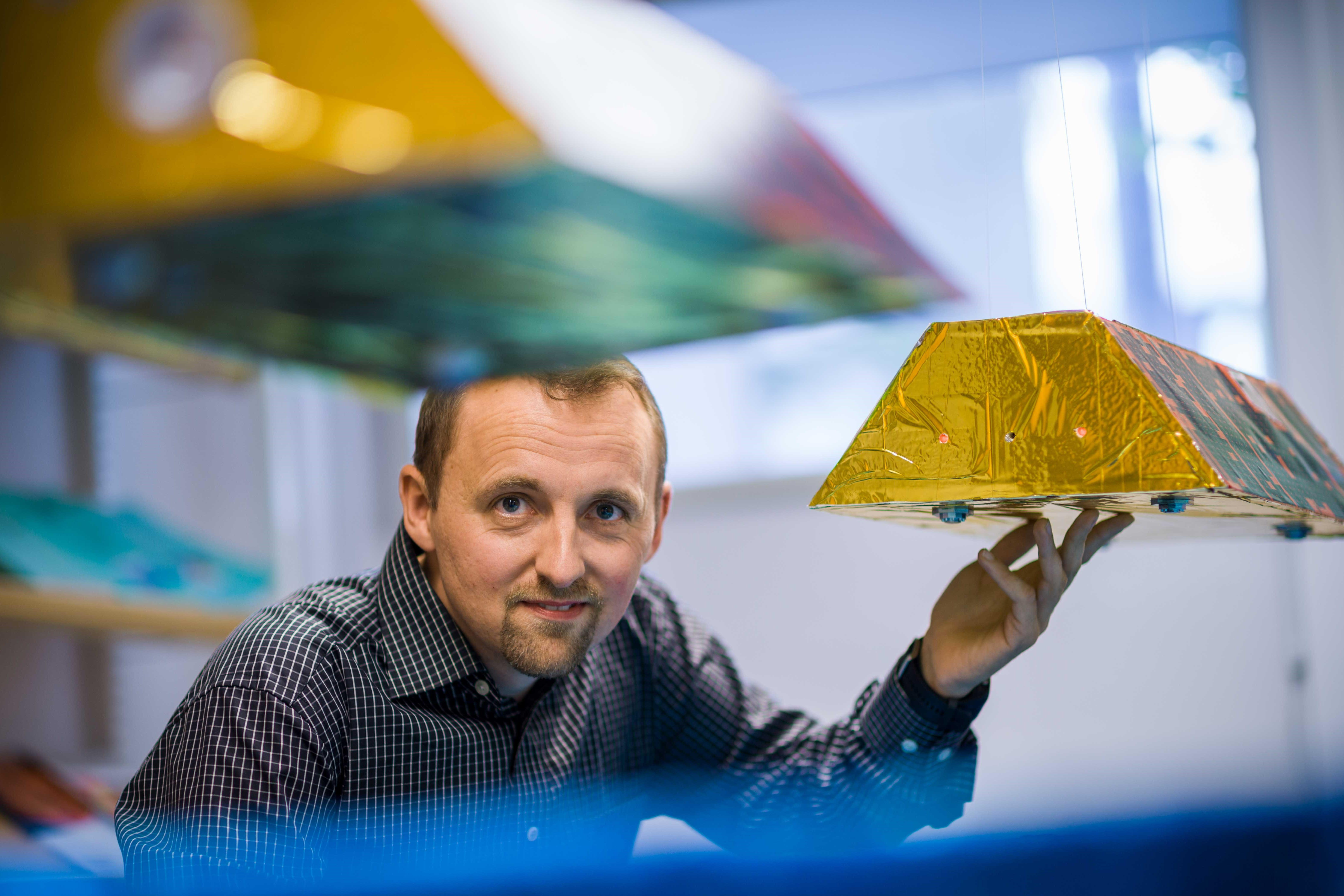
 ©
Jan Hosan/QuantumFrontiers
©
Jan Hosan/QuantumFrontiers
30167 Hannover

 ©
Jan Hosan/QuantumFrontiers
©
Jan Hosan/QuantumFrontiers
30167 Hannover
Who are you and what is the topic of your research group?
I am Vitali Müller, a physicist from Hannover. Together with my group, and in cooperation with industry and agencies, we are developing new laser-interferometric ranging instruments for space missions.
The ranging data of the instruments is used in the end to compute global maps that show how Earth’s mass distribution changed from month to month, due to, for example, Ice melting, groundwater or earthquakes.
In particular, in Hannover, we are analyzing the data of the GRACE-FO mission, which was launched in 2018 and hosts the first laser-ranging interferometer between satellites.
Which research question are you working on?
How can we improve the precision of distance measurements in future instruments and in current instruments using advanced data analysis techniques? Which corrections do we have to apply to the data? What are these or those disturbances or artefacts in the measured data?
We plan and develop new instruments and perform the calibrations of new instruments together with industry in order to ensure a flawless operation in space later.
What makes this topic special/exciting for you?
The topic is embedded in international collaborations with NASA, ESA and partly with China. We are in close contact with space industry partners. The topic is based on theoretical or data analysis work, but also laboratory setups are needed. Our measured data contributes to the observation of one of the essential climate variables, hence, it is relevant for tackling climate change.
We initially developed the laser-interferometric ranging technology to measure gravitational waves, pure fundamental research in physics. But now the technology became very useful for geodesy and many other disciplines.
How does your topic help to push the boundaries of what can be measured?
On the hand, we measure tiny distance changes of the size of single atoms over 200 km, but on the other hand, these measurements are used to compute how enormous ice masses melt on Greenland every year and how the planet changes as a whole. Hence, we are pushing the boundaries on two scales.
What is special about participating in the QuantumFrontiers cluster of excellence?
QuantumFrontiers brings together many different disciplines, from building the most accurate atomic clocks, measuring the smallest electrical currents to fabricating atomic-sized structures. In doing so, the cluster supports and develops the scientific structures, from which I benefit greatly as a scientist.






